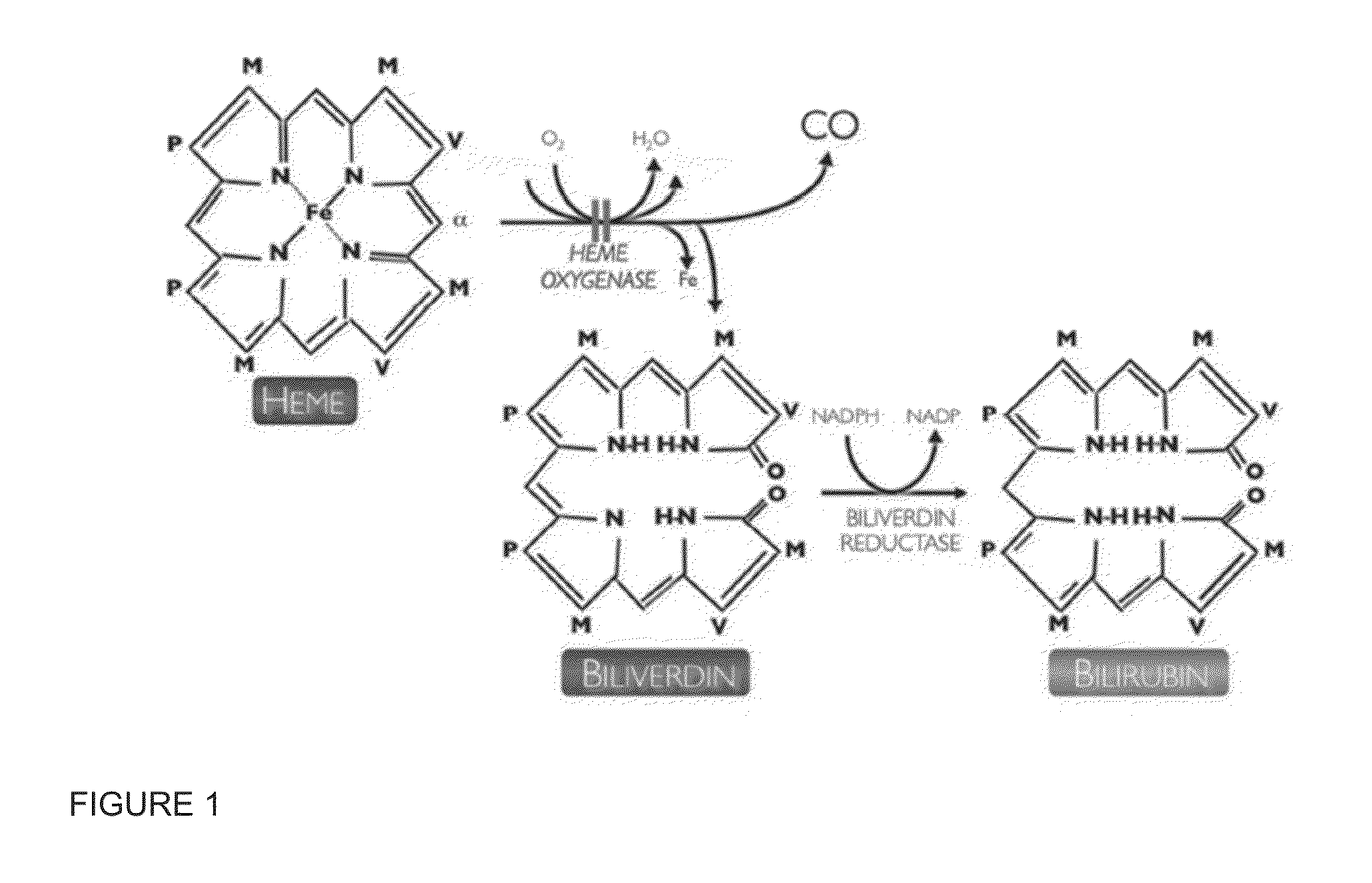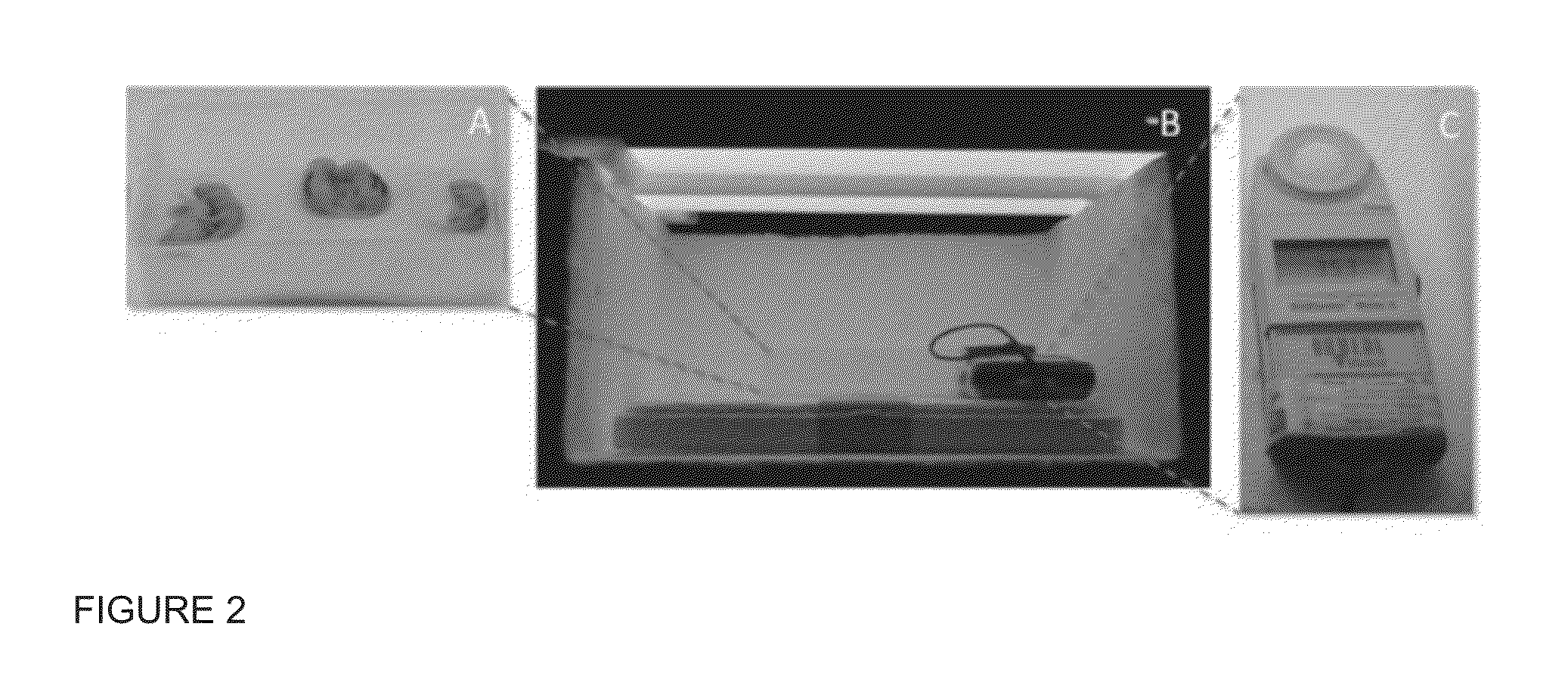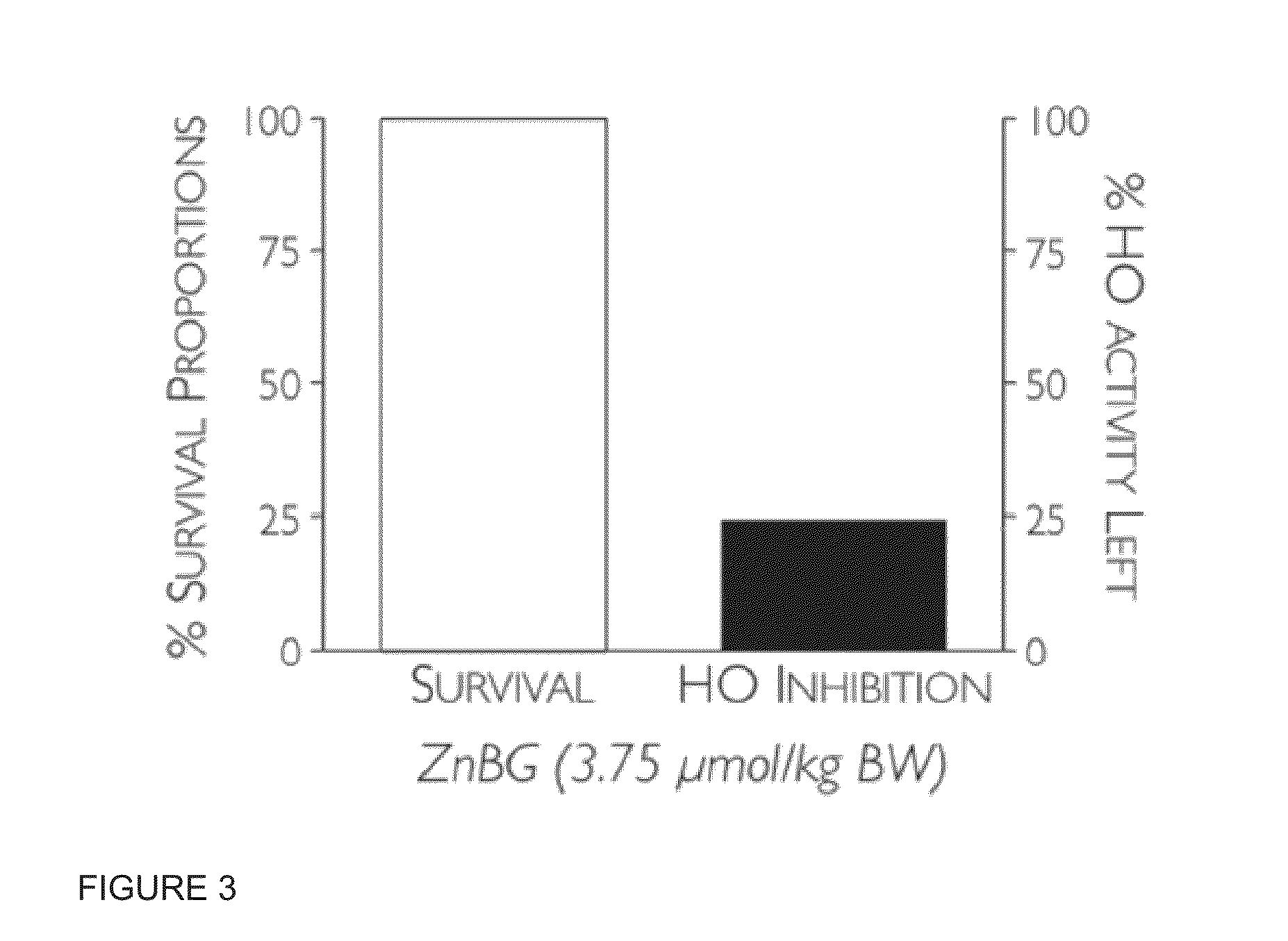Formulations and uses for microparticle delivery of zinc protoporphyrins
a technology of protoporphyrin and microparticles, which is applied in the field of formulations and uses of microparticles for the delivery of zinc protoporphyrin, can solve the problems of difficult delivery of the compound, achieve enhanced stability and solubility, increase the solubility of the active agent, and improve the effect of absorption in neutral conditions
- Summary
- Abstract
- Description
- Claims
- Application Information
AI Technical Summary
Benefits of technology
Problems solved by technology
Method used
Image
Examples
example 1
Effects of Light on Metalloporphyrin-Treated Newborn Mice
[0069]Neonatal hyperbilirubinemia arises from an imbalance between bilirubin production and its elimination. A study on aggressive vs conservative phototherapy with extremely low birthweight (ELBW) infants showed that the rate of neurodevelopmental impairment (NDI) alone was significantly reduced with aggressive phototherapy, but this reduction was offset by an increase in mortality among infants ≦501-750 g. In addition, the photo-oxidizing effect of light, including blue light, has been shown in animals. Moreover, it has also been suggested that the lower hemoglobin levels in ELBW infants may place them at higher risk for phototoxicity because less light is absorbed by hemoglobin in circulation. Metalloporphyrins (Mps) are promising drugs for treating hyperbilirubinemia, but most of them are photosensitizing and subsequently potentially phototoxic. Zinc protoporphyrin (ZnPP) is a promising Mp with sufficient potency, but it h...
example 2
Formulations
[0083]One disadvantage of ZnPP is that it is not orally bioavailable and it needs to be administered parenterally. Low oral bioavailability of ZnPP is a consequence of its low solubility and chemical instability in low pH environments, like that found in the stomach, and low aqueous solubility at neutral pH that limits its dissolution and subsequent absorption in the intestinal tract. ZnPP reacts in low pH aqueous solutions to form protoporphyrin IX free acid, which is inactive to inhibit HO.
[0084]A formulation is needed that will improve the oral bioavailability and effectiveness of ZnPP by both protecting the molecule from interacting with the acid environment found in the stomach and increasing its aqueous solubility in neutral pH to promote absorption in the upper small intestine. Ideally the formulation is in solid state in the form of a powder to improve both shelf-life of the eventual pharmaceutical dosage form as well as its manufacturability.
[0085]Microparticles...
example 3
Spray Dried Powder Preparation With Higher ZnPP Content
[0099]ZnPP formulation with lower EUDRAGIT® content; formulation components:
[0100]ZnPP; 20% w / w
[0101]DPPC; 42% w / w
[0102]EUDRAGIT® L100-55; 38% w / w
[0103]Preparation of 1% solids (w / v) feedstock solution for spray drying: ZnPP is dissolved with sonication in 1 M ammonium hydroxide (constituting 12.5% of total solvent volume). DPPC is added dissolved in ethanol (50% of total solvent volume). EUDRAGIT® L100-55 is added dissolved in ethanol (remaining 37.5% solvent volume). Spray drying conditions: same as described above.
[0104]Observations on this formulation, shown in FIG. 7B: The 20% ZnPP content was verified by LCMS. Even though some ZnPP release is evident in 0.1 N HCl medium, washing and resuspension of the acid-exposed particles in PBS pH 7.4 buffer resulted in large release of ZnPP measured by HPLC / MS. SEM images show similar morphology for these 38% w / w EUDRAGIT® particles compared to the previously tested formulation (75% w...
PUM
| Property | Measurement | Unit |
|---|---|---|
| diameter | aaaaa | aaaaa |
| diameter | aaaaa | aaaaa |
| birth weight | aaaaa | aaaaa |
Abstract
Description
Claims
Application Information
 Login to View More
Login to View More - R&D Engineer
- R&D Manager
- IP Professional
- Industry Leading Data Capabilities
- Powerful AI technology
- Patent DNA Extraction
Browse by: Latest US Patents, China's latest patents, Technical Efficacy Thesaurus, Application Domain, Technology Topic, Popular Technical Reports.
© 2024 PatSnap. All rights reserved.Legal|Privacy policy|Modern Slavery Act Transparency Statement|Sitemap|About US| Contact US: help@patsnap.com










